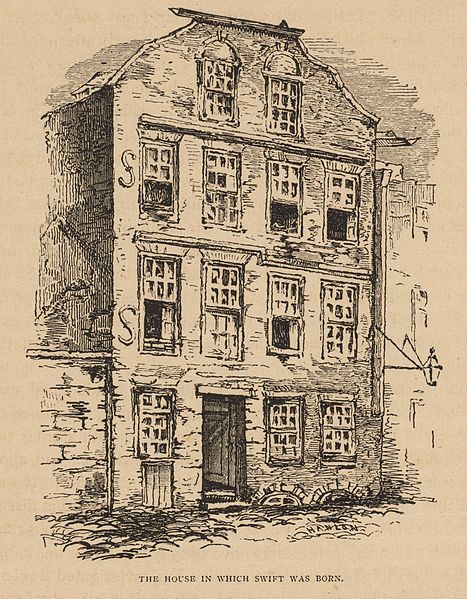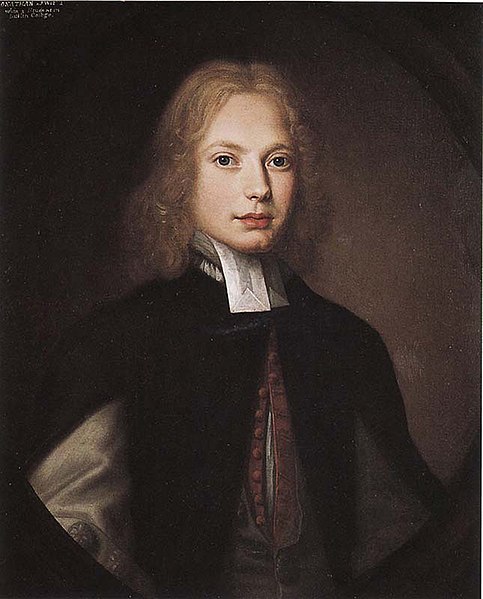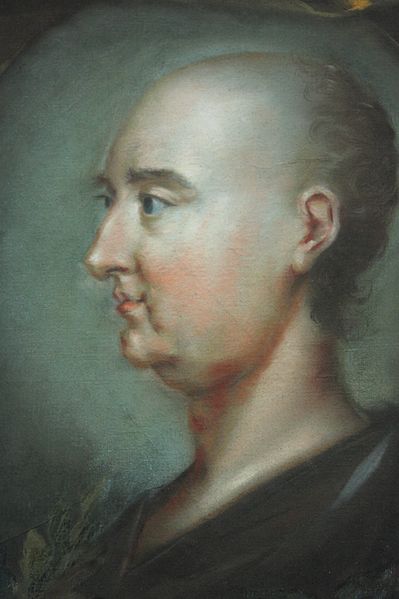Gulliver's Travels, or Travels into Several Remote Nations of the World. In Four Parts. By Lemuel Gulliver, First a Surgeon, and then a Captain of Several Ships is a 1726 prose satire by the Anglo-Irish writer and clergyman Jonathan Swift, satirising both human nature and the "travellers' tales" literary subgenre. It is Swift's best-known full-length work and a classic of English literature. Swift claimed that he wrote Gulliver's Travels "to vex the world rather than divert it".
First edition of Gulliver's Travels
Mural depicting Gulliver surrounded by citizens of Lilliput
Gulliver exhibited to the Brobdingnag Farmer (painting by Richard Redgrave)
Gulliver discovers Laputa, the floating/flying island (illustration by J. J. Grandville)
Jonathan Swift was an Anglo-Irish satirist, author, essayist, political pamphleteer, poet, and Anglican cleric who became Dean of St Patrick's Cathedral, Dublin, hence his common sobriquet, "Dean Swift".
Portrait by Charles Jervas, 1710
The house in which Swift was born; 1865 illustration
Jonathan Swift in 1682, by Thomas Pooley. The artist had married into the Swift family.
Jonathan Swift (shown without wig) by Rupert Barber, 1745, National Portrait Gallery, London








